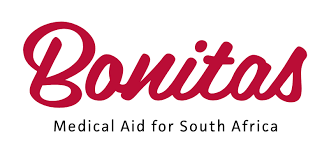

By now you should have signed up for a prenatal class, in which you learn what to expect in this final stage of pregnancy and during labour and delivery. Regardless of what type of delivery you’re hoping for, it is important that you learn about all options—drug-free, vaginal delivery with pain relief, and caesarean section.
You should also complete all preadmission information at the hospital where you hope to deliver. Most offer family tours of the maternity unit, which can help prepare older children for a new sibling.
And don’t forget to pack a bag for the hospital. Make sure you include a “coming home” outfit for the baby. One other thing: Make sure you have a car seat properly installed in your vehicle. The hospital won’t let you take Baby home without it!
It’s also time to begin planning for after the delivery. If you’ve decided to return to work after your maternity leave, it’s time to arrange for day care. You have numerous options: centre-based care, family-based care, hiring a nanny or an au pair. When considering day care, keep the following in mind:
When visiting day-care centres, the American Academy of Family Physicians recommends you ask the following questions:
Contrary to what you may think if you’ve ever been to a big-box baby supply store, newborns need very little. They need you, the breast or bottle, some simple clothing, diapers, and a safe place to sleep. Of course, that’s no fun!
Still, don’t go crazy buying things and decorating. If this is your first child, your friends and family will likely throw you a baby shower, and you’ll receive many of the items you need then. If you receive hand-me-down equipment like cribs, strollers and car seats, make sure they meet all current consumer safety requirements.
Here are the bare necessities you’ll need. The amount depends on how often you plan to do laundry. Keep in mind that newborns grow fast. Don’t buy too many items in the same size.
You also need to use this time to prepare for delivery. In addition to learning what to expect during labour and delivery, there are things you can to do to strengthen your body for the hard work ahead. (There’s a reason they call it “labour!”)
One of the most important steps you can take is to do pelvic floor exercises, or Kegels. Not only will these simple exercises help prevent post-partum incontinence, but by strengthening the pelvic floor muscles, they can make it easier to push the baby out.
Kegels are easy. First, figure out which muscles to target by stopping midstream when urinating. Those are the ones you want to strengthen. Then squeeze those muscles and hold for a count of 10. Relax, then repeat. Perform at least three sets of 10 contractions a day, two to three times a week throughout this trimester. Once the baby is born and you recover from the delivery, continue your Kegels.
That’s a very good question, particularly since you may have been experiencing “false” contractions, known as Braxton Hicks contractions, for weeks. To tell if it’s the “real” thing, time the contractions (which feel like strong menstrual cramps in the beginning) from the start of the one to the start of the next. If they come consistently, with about the same amount of time in between and become progressively closer and stronger, you’re in labour. Other signs that labour is potentially imminent include:
If any of these signs of labour occur, call your health care professional to discuss at what point to come into the hospital.
If you experience sudden, rapid weight gain of more than five pounds a week and facial and hand swelling, with or without headache, contact your health care professional immediately. You may be showing signs of preeclampsia, which used to be called pregnancy-induced hypertension. It occurs when your blood pressure suddenly rises after 20 weeks of pregnancy, but typically occurs in your third trimester. Your health care professional should be screening you for it at every prenatal visit by taking your blood pressure and checking for protein in the urine.
Also, contact your health care professional immediately if you haven’t felt the baby move in 24 hours or if you start bleeding vaginally.
Smart Advice: Stop taking Aspirin and Omega acids at about 34 weeks. Continuing to do so, could increase the risk of bleeding in you and the baby during labour.




Fill in the form below and we will get back to you as soon as we can.